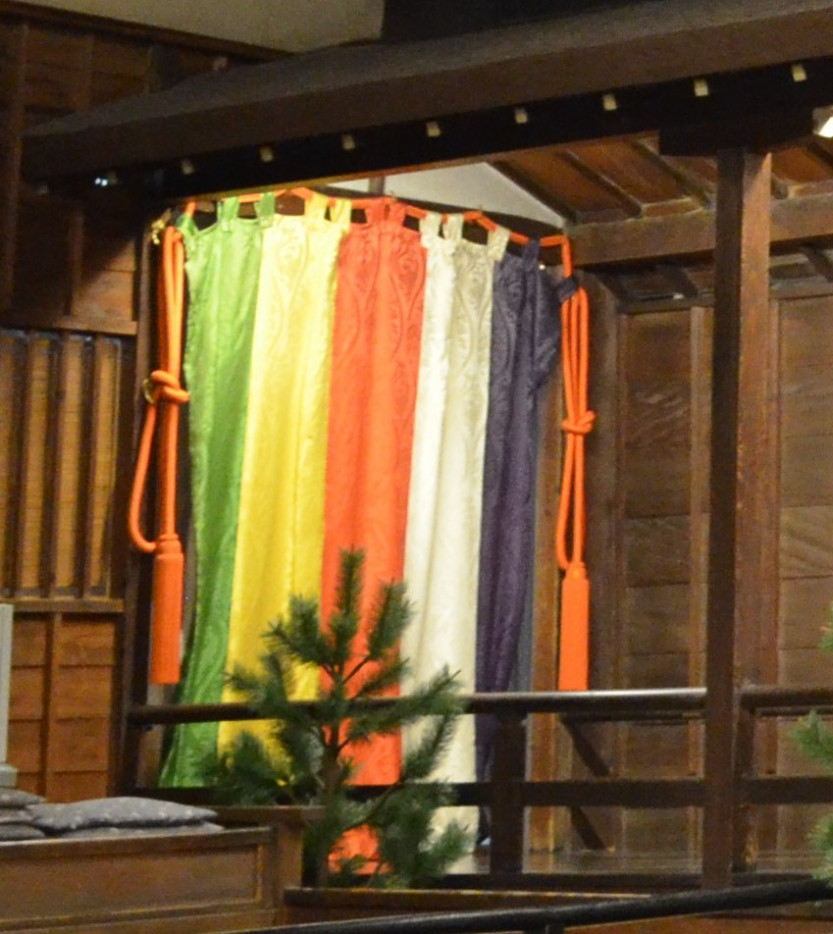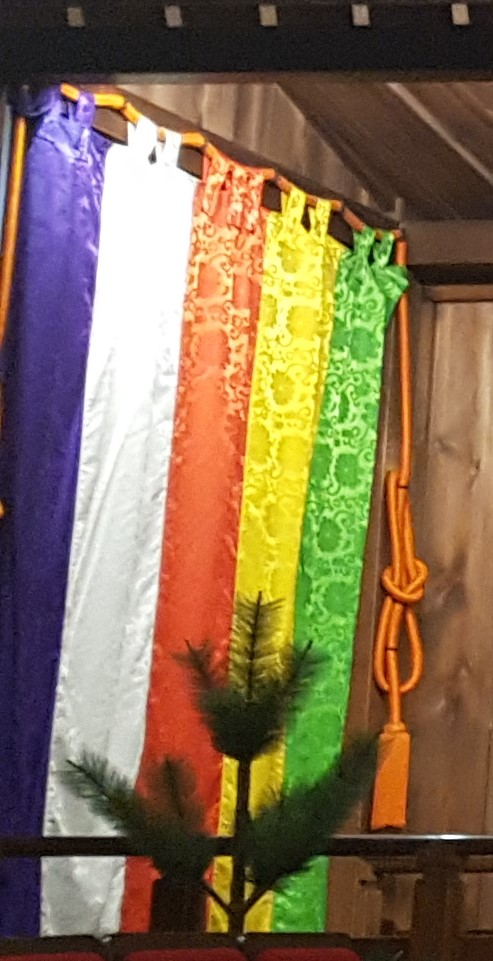
The curtain (agemaku) at the end of the bridgeway marks the border between the stage and the backstage space, called the “mirror room”(kagami no ma). The curtain is made of silk and is composed of five vertical strips of color. These colours reference the five elements of wood, fire, earth, metal, and water in Chinese philosophy, and the following order (from left to right from the audience’s point of view): green, yellow, red, white, and purple. However, there are some theatres with curtains displaying the colors in the reverse order. On either side of the curtain, two very large red ropes tied into an intricate knot and mounted on the wooden pillars make up the doorframe. The curtain is lifted and lowered by two people backstage using long poles fixed to the bottom of the curtain. This allows them to stay out of the way as the actors are entering and exiting.
